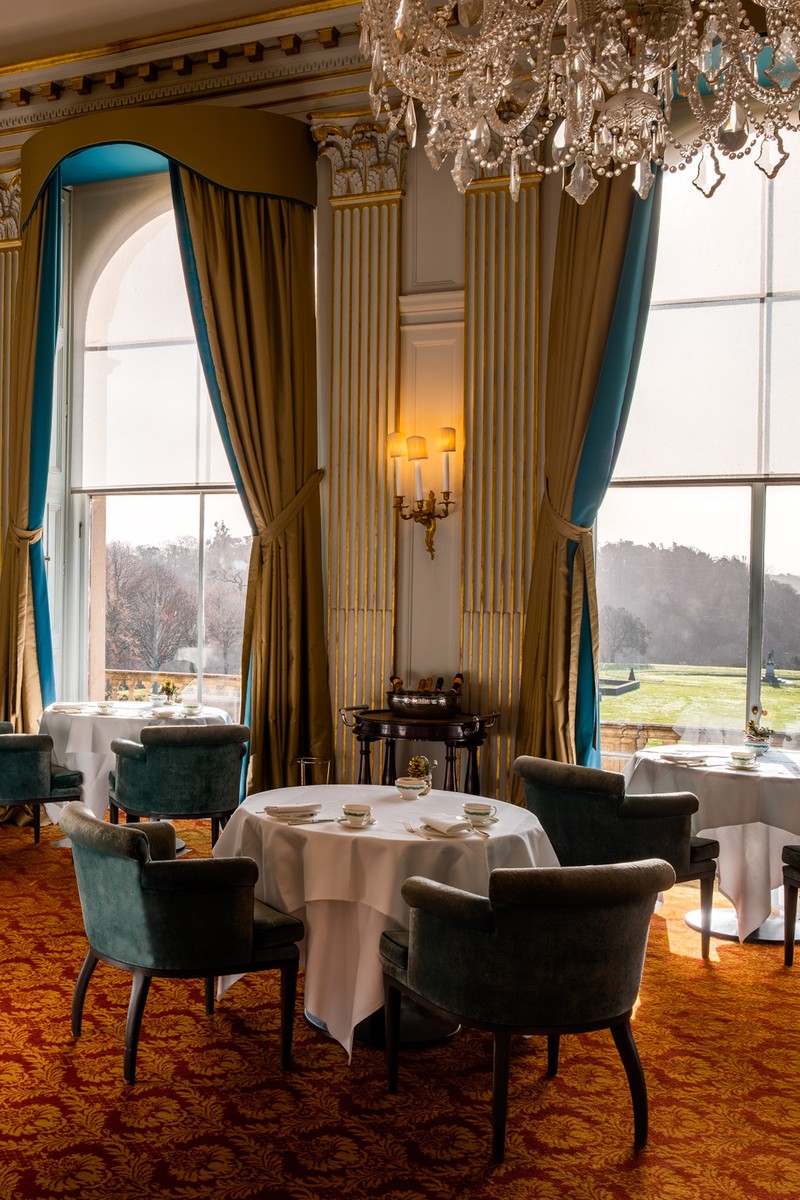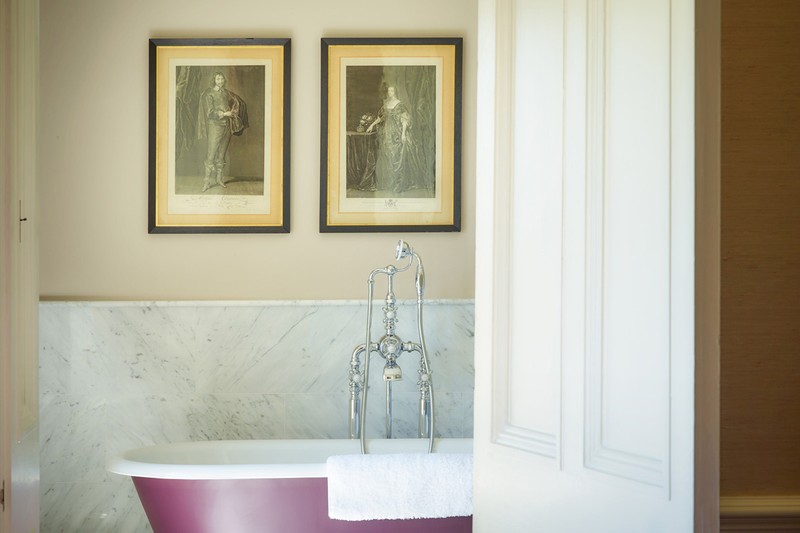

6 Amazing UK Hotels For History Buffs
The Cavendish
Derbyshire
The History: Records show that, for hundreds of years, there was an inn on this site in the village of Baslow which served the turnpike between industrial Chesterfield and the spa town of Buxton. Originally called the Peacock Inn, it was the property of the Duke of Rutland until 1830 when, as legend has it, the 6th Duke of Devonshire won the inn during a game of cards. From then, it became inextricably linked with the Chatsworth Estate, one of England’s most splendid stately homes. It was not until the 1970s that it opened as a hotel, The Cavendish (another family name for the Devonshires), as one of the many ventures of the then duchess, Deborah (aka known as Debo and the youngest of the Mitford sisters). In 1985, a new ten-room annexe, the Mitford Wing, was added but guests did not like staying in rooms named after Debo’s sisters – Unity, a confidante of Hitler, and Diana, the wife of Oswald Mosley, founder of the British Union of Fascists – and was renamed the Devonshire Wing.
The Hotel: Located in the picture postcard village of Baslow, The Cavendish Hotel is the ideal base for access to the 30,000-acre Chatsworth Estate with its historic house – a 20-minute stroll away – its gardens and parkland, as well as the beautiful landscapes, wildlife and villages of Derbyshire and the Peak District. Earlier this year, the hotel underwent a £3.5m renovation by renowned interior designer Nicola Harding and reopened in full this summer. The refurb celebrates the historic connection between the hotel and Chatsworth – Harding worked closely with Laura Burlington, the daughter-in-law of the current Duke of Devonshire, which gave her access to the Devonshire family’s collection of art and objets d’art that had been stored away for years. The result is artworks everywhere – from watercolours of the house, a Nancy Mitford painting of her childhood house and contemporary works by the likes of Elizabeth Frink to black and white historic family photos, including a portrait of Kathleen “Kick” Kennedy, sister of JFK and wife of the Marquess of Hartington, the heir to the 10th Duke of Devonshire. The 28 bedrooms, including two suites, all have lovely views across the estate and are done up with pretty wallpapers, antique furniture, canopied four-poster beds with retro telephones on the bedside tables, stone fireplaces and playful lamps made by a Chatsworth-based potter.
The two restaurants – The Garden Room and The Gallery, headed up by chef Adam Harper – celebrate the Peak District’s best-known producers, with the majority of the produce sourced from the gardeners and farmers at Chatsworth. The more formal The Gallery is done up in shades of teal with large paintings and drawings of views of the estate. Here, you can feast on dishes like trout from the nearby Ladybower Fisheries, Chatsworth Farm lamb with potato terrine and peas, and beef Wellington; or opt for the ten-mile tasting menu where each ingredient is produced, made and sourced on or within ten miles of the estate. The Garden Room, inspired by the glasshouses at Chatsworth, is flooded with natural light and has a large terrace for warmer days. Book a table here for a light lunch, with a good choice of sandwiches, salads and soups.
Hotel guests can arrange a private tour of Chatsworth and a buggy tour of the gardens, all well worth doing to skip the queues and for the knowledgeable guide. And if you happen to be in the area in the next week, fashionistas should make a beeline to the exhibition ‘Imaginary Conversations’ which explores fashion designer Erdem’s creative process in designing a collection inspire by Duchess Deborah.
Visit TheCavendishHotel.co.uk
The Bodmin Jail Hotel
Cornwall
The History: Built in 1779 during the reign of King George III as the main jail for north Cornwall, Bodmin Jail set a new standard in prison design with its individual cells, separate areas for men and women, and hot water facilities, and became the model for prisons across England. In 1887, the Royal Navy took over an entire wing of the jail and, after the last civilian inmates departed in 1923, the jail played host to the Crown Jewels during World War One. After thousands of inmates had passed through its doors and 55 executions for crimes such as murder and burglary, the jail was finally closed in 1927. By the 1930s, the historic building had reinvented itself yet again as a nightclub and casino. The luxe hotel opened in 2021.
The Hotel: Nestled on the edge of Bodmin Moor in the heart of Cornwall, the Grade-II listed former penitentiary was totally restored with a £65m investment after nearly 100 years of neglect. While much of the building’s 18th-century architecture remains, the dramatic exterior mixes old with new – as you arrive you are greeted by stone walls with barred windows, alongside modern black and glass structures – and once inside, the layout of the old prison with its atrium roof and balcony corridors is reminiscent of every prison seen in television dramas. The 70 stylish and contemporary bedrooms have been created by combining three former cells and still have the original doors and bars on the small windows – each has a plaque on the exposed brickwork wall telling guests about the crime committed by one of the prisoners who stayed in this cell. The bathrooms have walk-in rain showers, free standing baths and underfloor heating. Breakfast, lunch and dinner are served in the former jail’s chapel – expect excellent food using mainly local ingredients.
Showcasing the rich and darkly fascinating legacy of Georgian and Victorian crime and punishment, the hotel’s museum offers immersive experiences, from heritage tours that give an insight into the building’s riveting past to paranormal tours for those with a little more courage. Later this month, in the lead up to Halloween, the museum will also be offering a number of spooky experiences, culminating in an exclusive black tie murder mystery event on 1st November 2024.
Visit BodminJailHotel.com
Hotel Endsleigh
Devon
The History: In 1803, the 6th Duke of Bedford married his second wife, the beautiful Georgiana. Married to one of the richest men in the country (the duke owned a third of Devon), she yearned for Scotland where she grew up and, inspired by two cottages that belonged to her parents, artisans and tradesmen were commissioned to create a faux Scottish landscape and a cosy retreat. The property replaced a little hunting lodge that existed on the site in Devon’s Tamar Valley and became Georgiana’s beloved Endsleigh, which she referred to as ‘The Garden Paradise of the West’. In the grounds, there was a thatched dairy for the Duchess and an unlived-in cottage in the woods, built specifically so that, when the fire was lit by a boy who rowed across the river every morning, a charming wisp of smoke would emerge from the treetops to ‘animate’ the landscape. The estate remained in the Bedford family until it was broken up following the death of the 12th Duke in 1953 in a shooting accident. Endsleigh was then sold in 1961 to a fishing syndicate, which ran the house as a hotel, and in 2004 Olga Polizzi bought Endsleigh and, together with her daughter Alex, restored it as a luxury hotel.
The Hotel: About eight miles from Tavistock on the edge of Dartmoor, Hotel Endsleigh is set in 100 acres of fairytale gardens, woodlands, follies and grottos created by Humphry Repton, the last great landscape designer of the 18th century. This is the ultimate place to unwind and relax – as you wander through the stunning gardens, the only sounds you’ll hear are the burbling waters of the river Tamar that runs past the far end of the estate and divides Devon from Cornwall. Inside, the 21 generously sized rooms, including two new suites in the stables, are each individually decorated in typical Polizzi style – think uncluttered elegance with a mix of period and contemporary furniture, hand-painted wallpapers, antique bathroom fittings and chairs upholstered in pretty florals. The public areas include two homely drawing rooms with roaring fires, ottomans, botanical paintings and plump sofas.
The Restaurant is located in the original dining room and features beautiful wood panelling and crests of the friends of the Duke of Bedford. Dinner is a three-course menu. For starters, expect innovative dishes like chicken liver parfait with artichoke, blood orange and treacle bread; and hand-dived scallop and Morteau sausage, served with celeriac, apple, hazelnut butter. Main courses include haunch of venison, served with venison ragout, baby parsnip and garlic cavolo nero; and wild mushroom risotto with truffle taleggio, rocket and gremolata.
Out and about, there are plenty of places to visit, including Tavistock, Dartmoor, Buckland Abbey and several National Trust houses and gardens. But we’d rather stay put in this cosy retreat and tour its magical gardens over and over again.
Visit ThePolizziCollection.com
Beaverbrook
Surrey
The History: Dating back to the mid 19th century, the estate was purchased in 1910 by its most famous owner, Canadian-born businessman Max Aitken, 1st Baron Beaverbrook. As a major figure in British society, a powerful politician and owner of the influential Daily and Sunday Express newspapers, world leaders, Hollywood stars and literary greats were regular guests – the visitors’ book, still on show, bears witness to this, and includes the likes of John F. Kennedy, Elizabeth Taylor, the Duchess of Windsor, H.G. Wells, Ian Fleming, Rudyard Kipling and Harold Macmillan. One the most famous visitors was Winston Churchill who regularly came to stay with his close friend, Lord Beaverbrook. In 1940, at the start of the Second World War, Beaverbrook is reported to have given up his house as a war bunker, hosting the entire War Cabinet on occasion. This made the house a target for enemy fire and, in 1944, a German rocket narrowly missed it. Today, one of the most popular rooms is ‘Winston Churchill’ – it features his original bathroom and his secret escape passageway – and the hotel’s Spitfire logo recalls Lord Beaverbrook’s wartime role as Minister of Aircraft Production, within which he famously trebled the production of Spitfires.
The Hotel: In the Surrey Hills between Leatherhead and Dorking, about 20 miles from central London, Grade-II listed Beaverbrook, which opened as a hotel in 2017, is the quintessential English country house hotel. Its conversion from private home to lavish hotel was the work of creative director Sir Frank Lowe and interior designers Susie Atkinson (of Soho House fame) and Nicola Harding (Beaverbrook Town House, The Cavendish – see above). With a mix of original and modern pieces and an amazing collection of artworks, prints and photographs, the vibe here is uber luxe, yet informal, homely and totally unpretentious. The bedrooms, each named after Lord Beaverbrook’s famous guests, are spread across The House and The Garden House. All are flooded with natural light with views of the undulating countryside, and feature grand four-poster beds, private balconies and terraces; the ensuite bathrooms have roll-top baths, separate showers and spoiling Bamford products. We love the cosy Superior Turret rooms on the top floor of The House but, for more of a bucolic feel, book into one in The Garden House.
Be sure to make time to unwind in the wonderful, light-filled spa, which is housed in The Coach House, a former stable block. There are six treatment rooms, a sauna, a steam room, hammam, hyperbaric oxygen chamber and gym, as well as indoor and outdoor pools. The honey-infused facials using the estate’s own oils are a must-try.
Finally, the food – a highlight at Beaverbrook that pulls in the locals in droves too. The Garden House Restaurant is behind the walled kitchen garden and serves comforting Italian dishes – think artisanal burrata with white peaches; rigatoni with braised duck; and roasted monkfish with salsa verde. The Japanese Grill is more formal with a vast menu devised by ex-Noma chef Wojciech Popow – expect Japanese-inspired tacos and tempura, elegant sashimi and sushi, and meats cooked on the Robata grill. Laidback Mrs Beeton’s serves classic British fare using mainly local produce; and fresh stone baked oven pizzas are on offer at The Deli. Sir Frank’s Bar is the perfect pre- of post-dinner spot – here, you'll find walls lined with over 350 paintings by the Victorian botanical artist, Marianne North, a Gatsbyesque art-deco bar with topaz blue velvet stools, a menu of Japanese-inspired bar snacks and a great selection of cocktails.
Visit Beaverbrook.co.uk
Hartwell House
Buckinghamshire
The History: Built between 1570 and 1617 by Sir Alexander Hampden, Hartwell House has a remarkable history stretching back almost a thousand years to the reign of Edward the Confessor. It was also the seat of William Peveral, the natural son of William the Conqueror; of John Earl of Mortain who succeeded his brother Richard the Lion Heart as King of England in 1199; and its most famous resident, the exiled King Louis XVIII of France, who held court here from 1809 to 1814. During the Second World War, Hartwell served as an army billet for British and American troops. A fire in 1963 caused extensive damage and destruction of much of the architectural detail inside the house, but once purchased by Historic House Hotels, the Georgian interiors were painstakingly restored alongside extensive restoration of the historic gardens and parkland. Hartwell House opened as a hotel in 1989 and is now owned by the National Trust.
The Hotel: Just 40 miles northwest of London, within the Vale of Aylesbury and on the edge of the Chilterns, the impressive Grade-I listed house, which has both Jacobean and Georgian façades, was sympathetically restored (as were the 18th-century stables, coach house and indoor riding school) to create a luxe hotel with 48 rooms and suites. Set in 90 acres of landscaped gardens and parkland designed by a contemporary of Capability Brown, the hotel is approached by a sweeping drive that passes the ruins of a gothic tower and opens onto views of a lake with a stone bridge. Once inside, you can’t fail to be wowed by the sumptuous Georgian features that include rococo marble chimney pieces, decorative ceilings and a great hall in the baroque style. The grand stairway features an eccentric mix of carved figures including Sir Winston Churchill and G. K. Chesterton. It still feels like a royal house today and you can stay in the Duchess d’Angoulême room, once occupied by the daughter of Louis XVI, and Marie Antoinette, which features a four-poster bed and window seats overlooking the parkland. The main dining room is designed in the style of eminent 19th architect Sir John Soane and is based on a room in 11 Downing Street, with elegant arches and delicate detailing.
Chef Daniel Richardson has been here for 30 years and works closely with local suppliers and the hotel’s gardening team to ensure the menu’s ingredients are fresh and seasonal. You can feast on the likes of cured mackerel with candied heritage tomatoes, then move on to sirloin of beef or a breast of Aylesbury duck. For a little extra indulgence, afternoon tea is first class and served in the Great Hall (the oldest part of the building).
The spa offers a range of cutting-edge facials using the luxe anti-ageing skincare range and celebrity favourite, 111SKIN. There’s a sauna, steam room and gym, plus tennis courts in the old walled garden. Clay pigeon shooting and archery can also be arranged in the grounds.
Visit Hartwell-House.com
Cliveden House
Berkshire
The History: This opulent mansion, built in 1666 by the 2nd Duke of Buckingham to house his mistress, has played a pivotal role in Britain’s history for over three centuries. From politics to parties and scandals to intrigue, Cliveden has welcomed every British monarch since George I, and there’s no shortage of fascinating history, especially after William Waldorf Astor, America’s richest man, gave Cliveden to his son as a wedding present. From the 1930s, Waldorf and his wife Nancy Astor hosted fabulous parties at the country house, and it became a haunt for politicians, literati and celebrities from Charlie Chaplin, Winston Churchill and Harold Macmillan to President Roosevelt and George Bernard Shaw. It is, of course, where in 1961 John Profumo first laid eyes on Christine Keeler as she lay by the pool, a scandal that led to the fall of the Conservative Government. More recently, Meghan Markle stayed at Cliveden the night before her wedding.
The Hotel: This stunning National Trust and Relais & Châteaux country house is just 40 minutes from London and set in 376 acres of Grade-I listed formal gardens on the banks of the river Thames. Each of the 47 rooms – named after the illustrious personalities who have been part of the house’s history – has something unique and characterful about it. Colour schemes differ but they are all furnished with antiques, ornate fireplaces, panelling and paintings. Our favourites include the Henry James suite, with its ten-mile view of rolling countryside from its marble bathtub, and the Mountbatten suite which used to be the billiards room. Start your evening with a drink in the Library bar – we recommend the signature Cliveden champagne cocktails – followed by dinner in the ornate, chandeliered Dining Room. For something simpler and less formal, the gastro-style Astor Grill serves salads, pasta dishes and burgers.
The Pavilion spa is set within a secluded walled garden, screened by walls covered with scented roses. It has seven treatment rooms, indoor and outdoor pools, a sauna, an aromatherapy steam room and Jacuzzi. It has recently introduced some new treatments, including Monpure hair and scalp health treatments and an OSKIA deep sleep experience.
Visit ClivedenHouse.co.uk
DISCLAIMER: We endeavour to always credit the correct original source of every image we use. If you think a credit may be incorrect, please contact us at info@sheerluxe.com.


/https%3A%2F%2Fsheerluxe.com%2Fsites%2Fsheerluxe%2Ffiles%2Farticles%2F2024%2F10%2Fhotels-with-history-image-7.jpg?itok=ZX5vsLAO)
/https%3A%2F%2Fsheerluxe.com%2Fsites%2Fsheerluxe%2Ffiles%2Farticles%2F2024%2F10%2Fhotels-with-history-image-8.jpg?itok=5pY5SpCf)
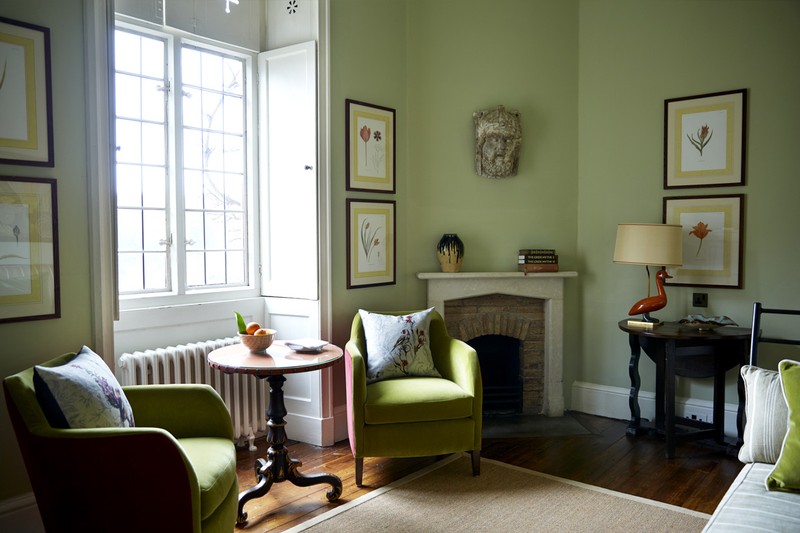
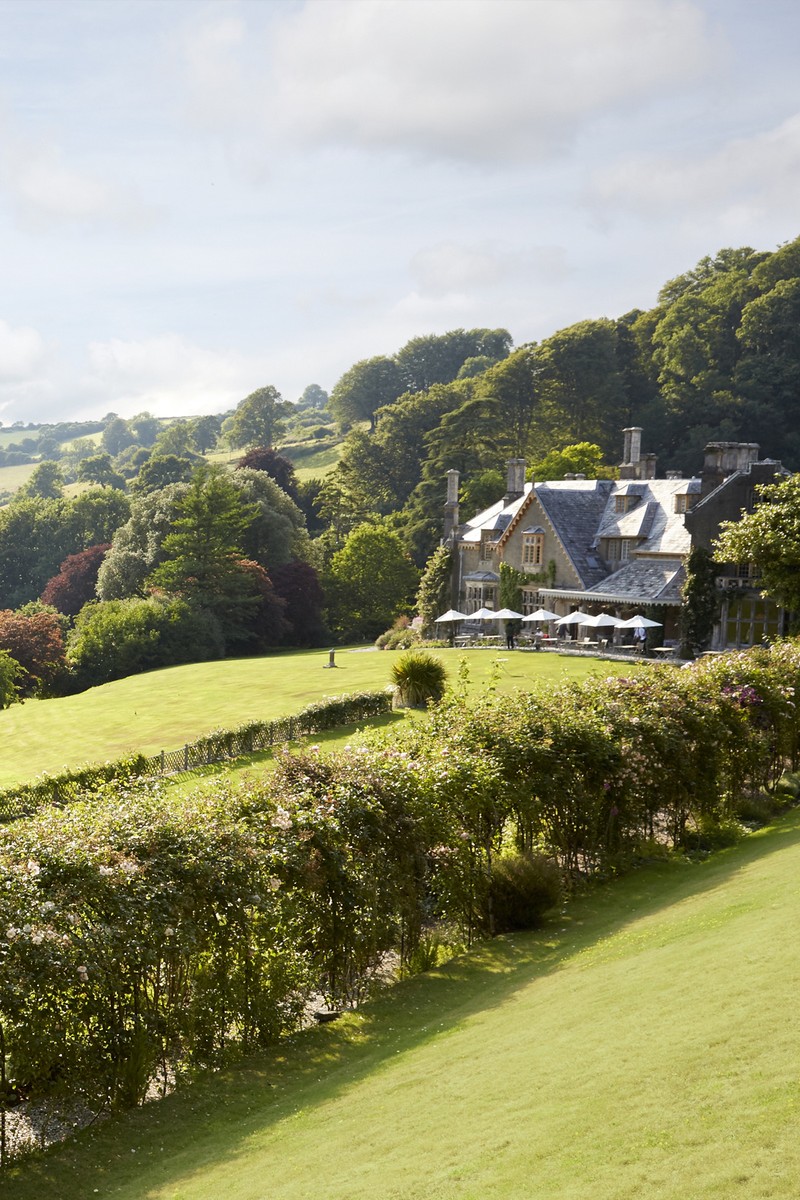
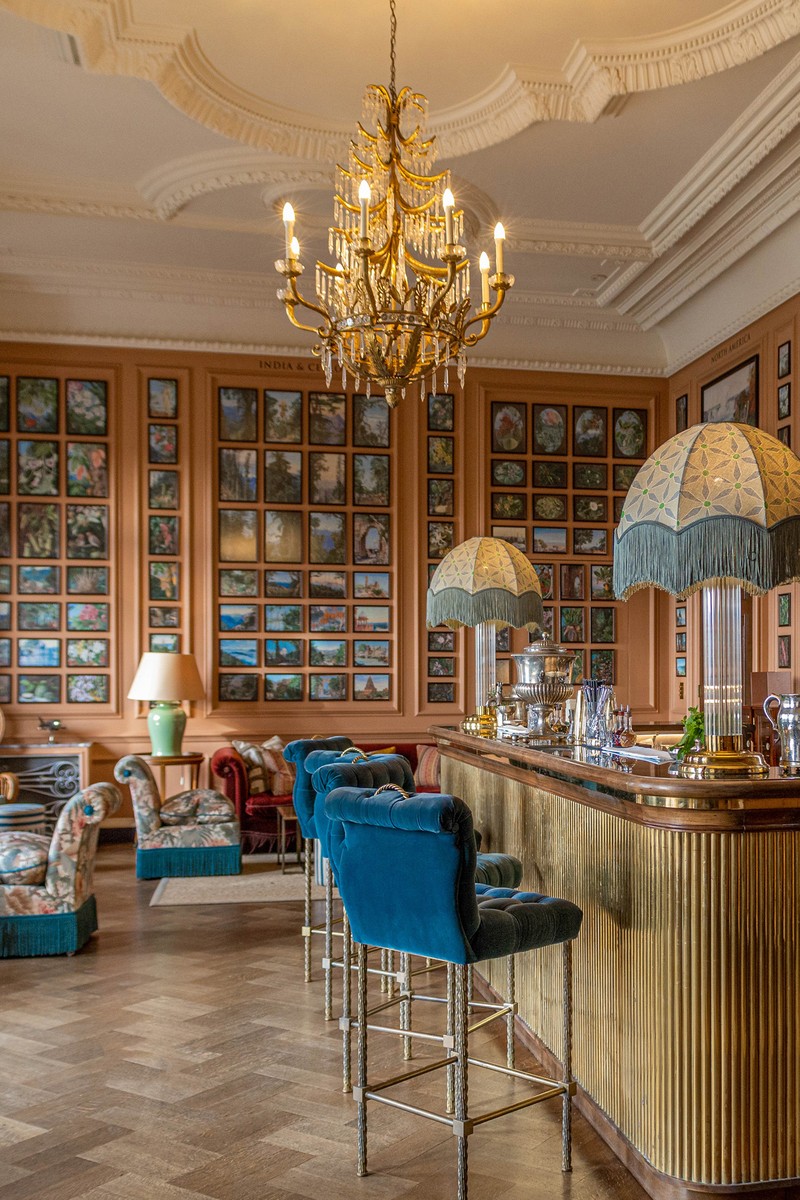
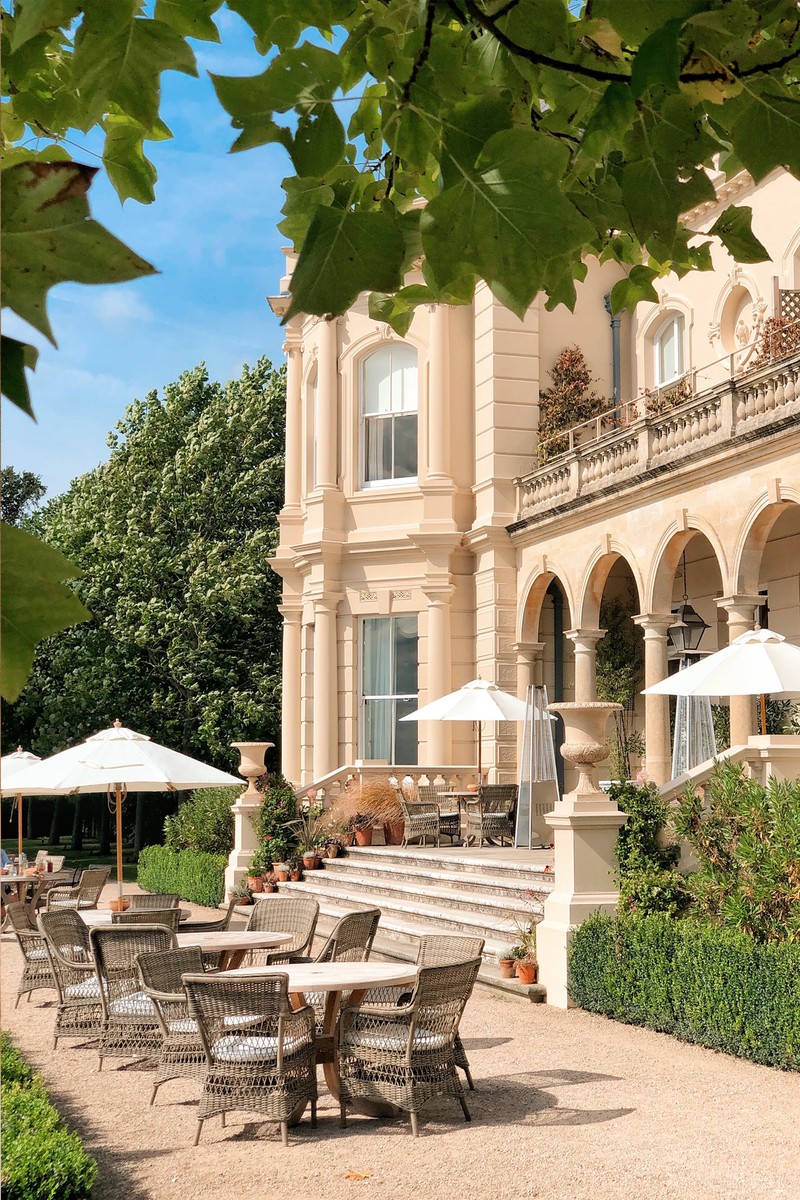
/https%3A%2F%2Fsheerluxe.com%2Fsites%2Fsheerluxe%2Ffiles%2Farticles%2F2024%2F10%2Fhotels-with-history-image-14.jpg?itok=R99GttYm)
/https%3A%2F%2Fsheerluxe.com%2Fsites%2Fsheerluxe%2Ffiles%2Farticles%2F2024%2F10%2Fhotels-with-history-image-15.jpg?itok=2v4gh_3j)
